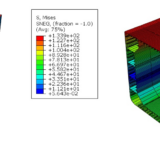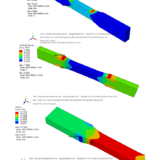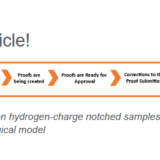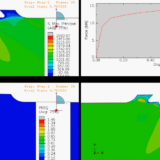Engineering materials modeling under extreme loading conditions
Prof. Marcelo Paredes
Ocean Engineering Dept.
Texas A&M University (TAMU)
ABSTRACT:
From efficient transportation of natural gas produced in remote regions or storage of Oil and Gas (O&G) and their derivatives to complex and yet simple specific energy absorption devices for bumpers or anti-collision components, accurate and reliable computational tools are highly desired to ensure not only safety operation but also cost-effective decision-making process in terms of material selection and operational requirements. In this presentation, we will review very briefly some engineering applications, specifically in the O&G industry, where practical computational methodologies leverage the most challenging problems related to structural integrity and fracture control in critical installations. For instance, in the presence of crack-like defects in line pipes transporting gas mixtures such as CO2 and CH4 the thermodynamics of the gaseous fluid becomes increasingly important as it defines the crack arrestability property of the material. Other critical examples involving key engineering components include welded joints using dissimilar materials such as special corrosion resistance Inconel alloy with less noble X series pipeline grade and strain-based approach for structural integrity assessment of deployed subsea risers and onshore line pipe network. Overall the possible failure mechanisms acting on a structural component can be rationalized into a broad and general fracture surface characterizing the actual stress state in conjunction with the amount of local plastic deformation that precedes the onset of fracture. Therefore, ductile fracture propagation control is an essential element of the pipeline design. In this seminar, certain important aspects of modeling these complex engineering drawbacks will be presented and discussed in practical manner.
BIO:
Marcelo Paredes is an assistant professor in the Ocean Engineering Department at Texas A&M University (TAMU). He earned his doctoral degree in 2012 from the University of Sao Paulo (USP) in the area of fracture mechanics. Before joining TAMU Marcelo spent a few years as a research scientist in the Impact and Crashworthiness Laboratory (ICL) at MIT. His research interests lie in the interface of physics and mechanics of solids and structures, focusing on continuous-level material modeling development and predictive computational tools for structural integrity assessment of engineering materials with special emphasis on ductile crack propagation in thick-walled components and ductile-to-brittle transition behavior.
December 11, 2023, 10 am – 11 am
Escola Politécnica – USP
Auditório ET-3 do Depto. de Engenharia Naval e Oceânica (PNV)
Link da transmissão ao vivo






